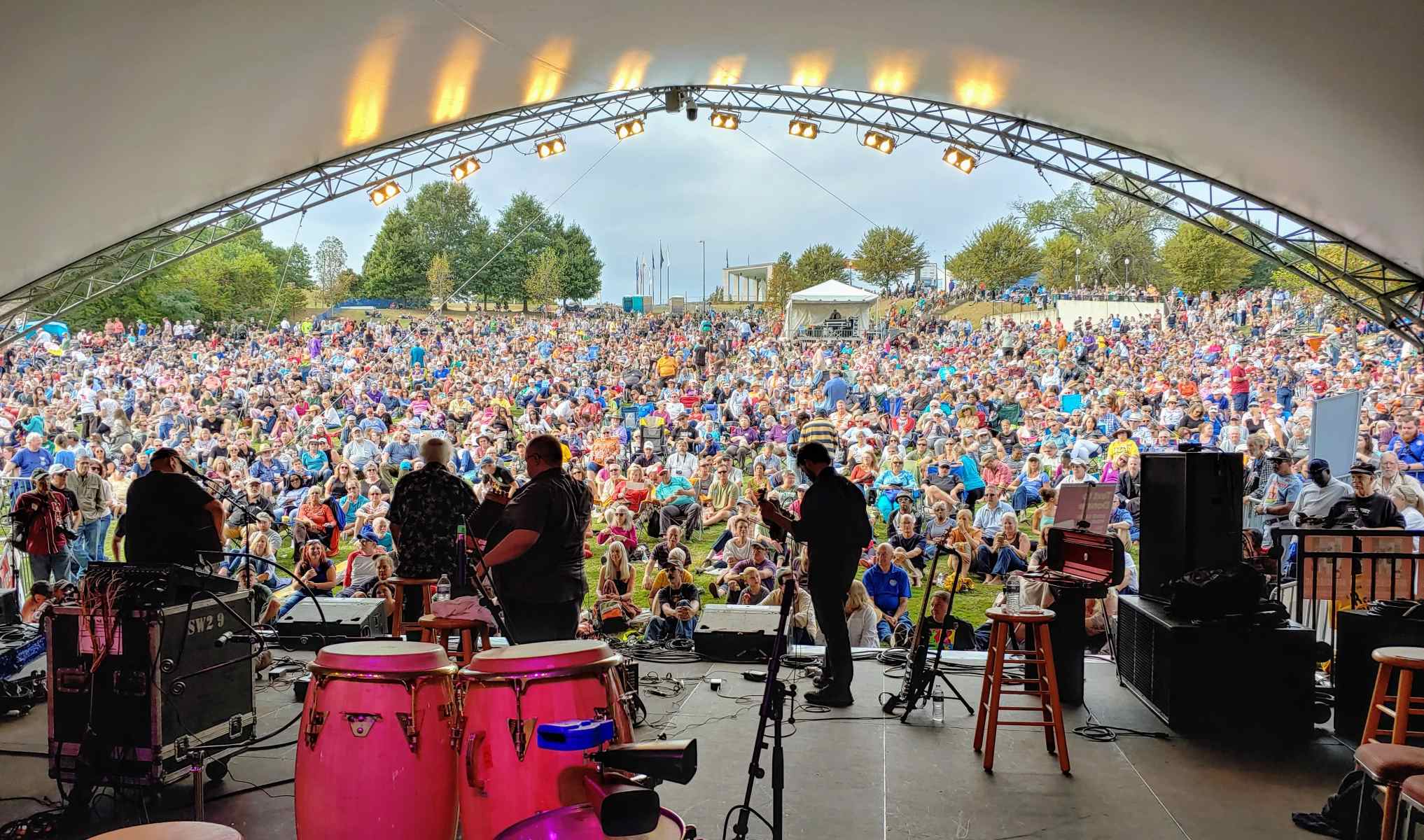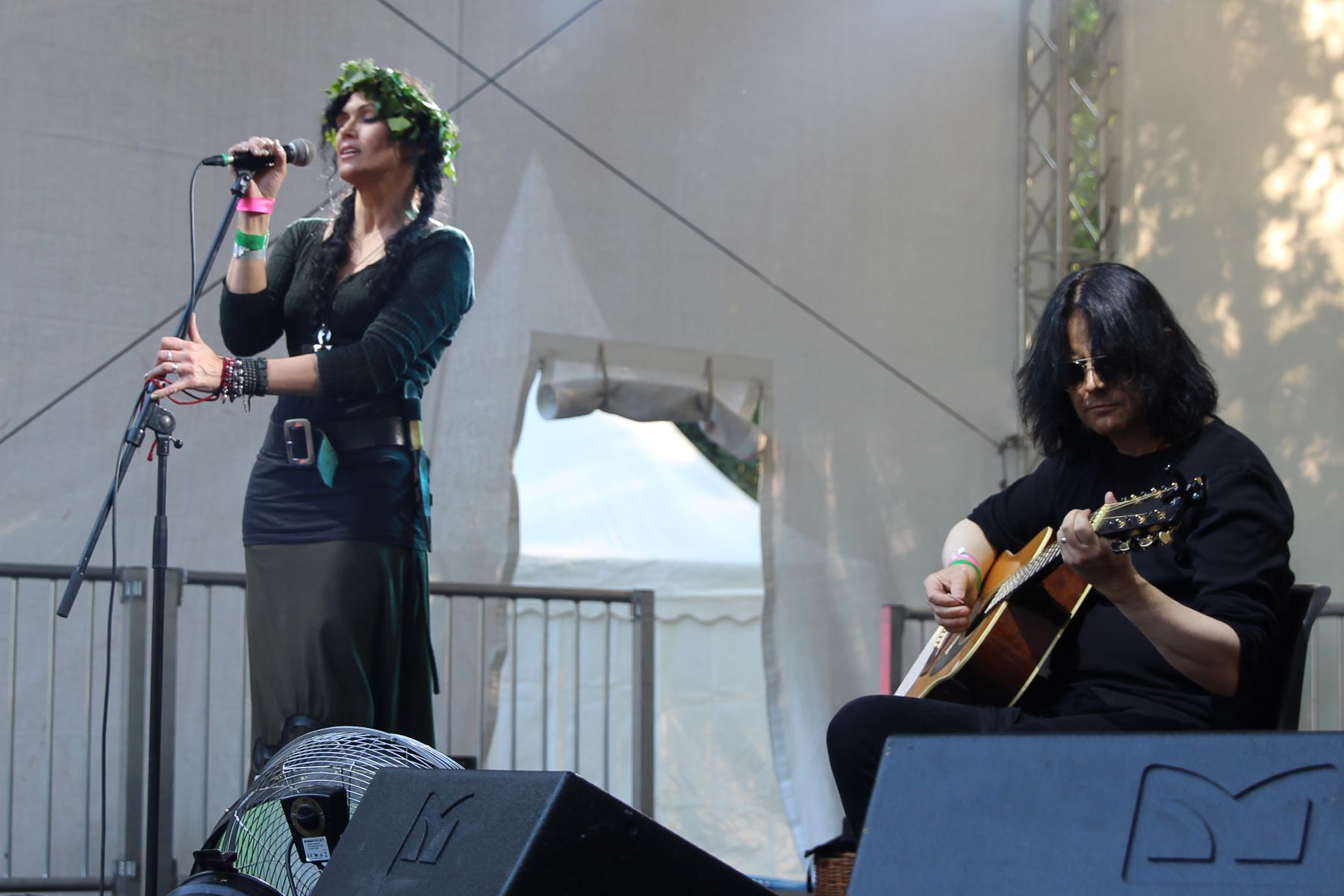

Folk
What Is A Folk Song
Modified: January 22, 2024
Discover the essence of folk music with our comprehensive guide. Learn the history, characteristics, and cultural significance of folk songs.
(Many of the links in this article redirect to a specific reviewed product. Your purchase of these products through affiliate links helps to generate commission for AudioLover.com, at no extra cost. Learn more)
Table of Contents
- Introduction
- Definition of Folk Song
- Characteristics of Folk Songs
- Historical Significance of Folk Songs
- Cultural Importance of Folk Songs
- Variations of Folk Songs around the World
- Famous Examples of Folk Songs
- Modern Interpretations and Revivals of Folk Songs
- Role of Folk Songs in Preserving Cultural Heritage
- Conclusion
Introduction
Folk songs are an integral part of human culture and have been passed down from generation to generation. They encapsulate the essence of a community, reflecting their beliefs, values, struggles, and joys. These songs serve as a bridge to our past, providing insights into the lives and experiences of our ancestors.
Unlike popular songs that are created for mass consumption, folk songs emerge organically from the collective consciousness of a particular group or region. They are often composed anonymously and are deeply rooted in tradition, portraying the essence of a culture and its people.
Folk songs are not confined to a specific time period or geographical location. They exist across cultures and are a testament to the universality of human emotions and experiences. From the hauntingly beautiful melodies of Appalachian ballads in the United States to the rhythmic chants of African tribal songs, folk music serves as a cultural artifact, sharing stories and insights into diverse communities.
In this article, we will explore the definition, characteristics, historical significance, and cultural importance of folk songs. We will also delve into the variations of folk songs around the world and highlight famous examples. Additionally, we will examine the modern interpretations and revivals of folk songs, as well as the role they play in preserving our cultural heritage.
So, grab your favorite instrument or simply sit back and immerse yourself in the captivating world of folk songs.
Definition of Folk Song
Defining a folk song can be a complex task, as it encompasses a rich tapestry of cultural, historical, and musical elements. At its core, a folk song is a traditional composition that has been created and passed down orally within a community or culture. It is a form of musical expression that captures the essence of a particular group’s identity and experiences.
Folk songs are rooted in the cultural heritage of a community and are often associated with specific regions, ethnicities, or historical events. They are created by everyday people rather than professional musicians, and they reflect the aspirations, values, struggles, and joys of the common folk.
One of the distinctive features of folk songs is their oral transmission. They are typically learned through generations by word of mouth, passed down from parents to children, neighbors to neighbors, and friends to friends. This oral tradition ensures the preservation of the song’s authenticity and allows for variations and adaptations to occur naturally over time.
In terms of musical structure, folk songs often have simple melodies, with repetitive patterns and lyrics that are easy to remember and sing along to. They are often performed acoustically, using traditional instruments such as guitar, banjo, fiddle, or accordion.
It’s important to note that folk songs can encompass a wide range of themes and genres. They can be narratives that tell stories from history or folklore, they can express social or political commentary, or they can capture the beauty of nature and everyday life. The diversity of folk songs reflects the multifaceted nature of human experiences.
While the definition of a folk song may vary slightly depending on cultural context, it is universally recognized as a vital form of artistic expression that serves as a cultural heirloom, connecting past and present generations.
Characteristics of Folk Songs
Folk songs possess several distinct characteristics that set them apart from other musical genres. These characteristics contribute to their charm and enduring popularity:
- Oral Tradition: Folk songs are transmitted orally from one generation to the next, ensuring that they remain authentic and reflective of the community’s cultural heritage. This oral tradition allows for improvisation and adaptation, leading to variations in melodies and lyrics over time.
- Simplicity: Folk songs are known for their simplicity in terms of musical structure. They often have repetitive melodies, making them easy to learn and sing along to. The lyrics are straightforward and accessible, allowing them to resonate with a wide audience.
- Authenticity: Folk songs are deeply connected to the experiences and emotions of everyday people. They reflect the realities, struggles, and joys of the common folk, tackling themes such as love, loss, work, nature, and societal issues. This authenticity makes them relatable and enduring.
- Community Identity: Folk songs are intricately tied to the identity of a community or culture. They capture the unique traditions, values, and beliefs of a particular group, serving as a means of cultural expression and identification.
- Adaptability: Folk songs have a remarkable ability to adapt to different contexts and styles. They can be reinterpreted and rearranged by artists over the years, evolving with the changing times while still retaining their essence and historical significance.
- Social Commentary: Many folk songs serve as a form of social commentary, addressing issues such as inequality, injustice, and political unrest. They provide a platform for expressing collective opinions and voicing the concerns of the marginalized.
- Connection to Nature: Folk songs often embody a deep connection to the natural world. They celebrate the beauty of landscapes, seasons, and wildlife, fostering a sense of harmony between humans and nature.
- Emotional Resonance: Perhaps one of the most compelling characteristics of folk songs is their ability to evoke deep emotions in listeners. They can transport us to different time periods, evoke nostalgia, inspire courage, or bring tears to our eyes through their heartfelt lyrics and melodies.
These defining characteristics make folk songs a cherished form of musical expression, preserving cultural heritage and capturing the essence of human experiences throughout history.
Historical Significance of Folk Songs
Folk songs hold immense historical significance, acting as a window into the past and providing insights into the lives and experiences of previous generations. They serve as a valuable record of historical events, societal changes, and cultural shifts. Here are some key reasons why folk songs are historically significant:
- Preserving Oral History: Folk songs have served as a means of transmitting oral history throughout the ages. They contain narratives and stories that depict important events, social customs, and legends from the past. By passing down these songs from one generation to the next, historical knowledge is preserved and shared.
- Documenting Working-Class Life: Many folk songs emerged from working-class communities and shed light on the daily lives, struggles, and aspirations of laborers, farmers, and marginalized groups. They provide a unique perspective on the socio-economic conditions of different time periods, capturing the essence of the common people.
- Voicing Cultural Resistance: Folk songs have often been used as a tool for cultural resistance and preservation. During times of political oppression or colonization, folk songs have acted as a means of expressing identity and resistance. They have been used to assert cultural pride, convey hidden messages, and unite communities in their struggle for freedom.
- Reflecting Socio-Political Movements: Folk songs have played a significant role in various socio-political movements, capturing the spirit and ideals of these transformative periods. From the civil rights movement in the United States to anti-apartheid movements in South Africa, folk songs have served as anthems, rallying cries, and vehicles for change.
- Shaping Cultural Evolution: Folk songs reflect the evolution of culture over time. They demonstrate how traditions, beliefs, and values are passed down through generations, often adapting to new circumstances and influences. By studying the changes in folk songs, historians gain insights into the cultural dynamics and shifts in society.
- Influencing Artistic Movements: Folk songs have had a profound impact on various artistic movements. They have inspired poets, writers, painters, and musicians, influencing the development of literary works, visual arts, and contemporary music. Artists have drawn inspiration from folk songs to create pieces that reflect their society’s spirit and struggles.
In summary, folk songs are an invaluable historical resource, offering glimpses into the past, documenting cultural evolution, and shaping socio-political movements. They provide a unique perspective on historical events, social conditions, and the lived experiences of different communities, enriching our understanding of our shared human history.
Cultural Importance of Folk Songs
Folk songs carry immense cultural importance, acting as a powerful vehicle for preserving and celebrating a community’s heritage. They hold a special place within a society, contributing to cultural identity, cohesion, and expression. Here are some key aspects that highlight the cultural significance of folk songs:
- Preservation of Cultural Heritage: Folk songs serve as a repository of a community’s traditions, customs, and beliefs. They embody the cultural practices, values, and rituals that have been passed down through generations. By preserving and performing these songs, communities keep their cultural heritage alive.
- Expression of Identity: Folk songs are intimately tied to a community’s sense of identity. They reflect the distinctiveness and uniqueness of a particular group, allowing individuals to connect with their roots and feel a sense of belonging. Folk songs become symbols of cultural pride, reinforcing a community’s identity.
- Transmission of Values and Knowledge: Through the lyrics and narratives of folk songs, cultural values, moral lessons, and historical knowledge are imparted. They act as a vehicle for transmitting wisdom, societal norms, and shared experiences from one generation to the next. Folk songs become a means for educating and socializing individuals within a culture.
- Community Bonding: Folk songs often bring communities together, fostering a sense of unity and shared purpose. They are performed in communal settings such as festivals, gatherings, or social events, creating a space for individuals to connect and strengthen social bonds. Folk songs become a unifying force within the community.
- Celebration of Festivities and Traditions: Folk songs play an integral role in cultural celebrations and rituals. They are performed during festivals, weddings, religious ceremonies, and other significant occasions, adding a layer of richness and meaning to these events. Folk songs become an essential part of cultural festivities and a source of joy and celebration.
- Preservation and Revitalization of Indigenous Languages: Folk songs often showcase the languages unique to a particular culture. By singing and preserving these songs, indigenous languages are kept alive and valued. Folk songs contribute to the revitalization and sustainability of linguistic diversity.
- Promotion of Intergenerational Exchange: Folk songs provide a platform for intergenerational exchange and interaction. Through the transmission and performance of these songs, older and younger generations connect, share stories, and bond over shared cultural experiences. Folk songs become a link between different age groups and a bridge between past and present.
In summary, folk songs hold significant cultural importance, as they preserve cultural heritage, express identity, transmit values, foster community bonding, celebrate traditions and festivities, and promote linguistic diversity. They are an integral part of a community’s cultural fabric, enriching the lives of individuals and ensuring the continuity of cultural traditions for future generations.
Variations of Folk Songs around the World
Across the globe, folk songs exhibit a rich diversity, reflecting the unique cultural expressions and traditions of different regions and communities. Here are some notable variations of folk songs from around the world:
- Celtic Folk Songs: In Ireland and Scotland, Celtic folk songs have a distinctive melodic style and often involve storytelling. These songs celebrate Irish and Scottish heritage, touching upon themes of love, war, nature, and mythical tales.
- Native American Tribal Songs: Native American tribes have a rich musical tradition, with each tribe having its own unique folk songs. These songs are deeply connected to nature and spirituality, conveying the reverence for the land, ancestral heritage, and oral history.
- Bollywood Film Songs: In India, Bollywood film songs have become a popular form of folk-inspired music. These songs blend traditional Indian melodies, rhythms, and instruments with contemporary influences, forming a fusion of folk and modern music.
- Japanese Min’yo: The traditional folk songs of Japan, known as min’yo, encompass a wide range of styles and themes. Some min’yo songs reflect the rural lifestyle and cultural richness of different regions of Japan, often accompanied by traditional instruments such as shamisen and koto.
- African Tribal Songs: Africa is renowned for its diverse array of tribal songs, reflecting the cultural diversity and rich musical heritage of the continent. These songs vary in style and rhythm, capturing the distinct traditions, rituals, and storytelling of different African tribes.
- Latin American Folk Songs: Latin America boasts a vibrant tapestry of folk songs, filled with infectious rhythms and passionate melodies. From the lively rhythms of salsa in Cuba to the soulful ballads of the Andean region, Latin American folk songs showcase the cultural richness and diversity of the region.
- Appalachian Ballads: The Appalachian region of the United States is famous for its haunting ballads that recount tales of love, loss, and historical events. These songs have strong roots in Scots-Irish and African American traditions, with influences from Native American and European folk music.
- Maori Waiata: The Maori people of New Zealand have a rich tradition of waiata (songs). These songs are deeply rooted in Maori culture, expressing their connection to the land, spirituality, and historical narratives. Waiata are sung in a melodic, harmonious style and often accompanied by traditional instruments.
These examples represent just a fraction of the vast array of folk song variations found throughout the world. Each region and community adds its unique flavor, instrumentation, language, and cultural nuances to this timeless art form, creating a rich tapestry of musical expressions.
Famous Examples of Folk Songs
Folk songs have produced countless memorable and influential compositions that have stood the test of time. Here are some famous examples of folk songs that have captured the hearts and minds of people around the world:
- “Blowin’ in the Wind” by Bob Dylan: This iconic folk song, released in 1962, became an anthem of the civil rights and anti-war movements. Dylan’s powerful lyrics and simple melody resonated with a generation seeking social justice and change.
- “This Land Is Your Land” by Woody Guthrie: Woody Guthrie’s classic folk song, written in 1940, has become an unofficial American folk anthem. This song celebrates the beauty of the American landscape and highlights the importance of unity and inclusivity.
- “Guantanamera” by Joseito Fernández: This Cuban folk song, popularized by musician Joseito Fernandez, has become one of the most recognizable Latin American songs worldwide. Its infectious melody and poetic lyrics pay homage to the spirit and beauty of Cuba.
- “Scarborough Fair” by Simon & Garfunkel: Originally a traditional English ballad, Simon & Garfunkel’s rendition of “Scarborough Fair” in the 1960s brought a fresh interpretation to this haunting folk song. Its melancholic melody and vivid lyrics have made it a timeless classic.
- “La Bamba” by Ritchie Valens: While “La Bamba” has roots in Mexican folk music, Ritchie Valens’ energetic rock and roll adaptation in the late 1950s propelled it to international fame. This lively song celebrates the joy of dance and is still a popular choice for festivities.
- “Greensleeves” (Traditional): “Greensleeves” is a traditional English folk song dating back to the late 16th century. Its haunting melody and poetic lyrics have made it an enduring favorite, with countless renditions by artists around the world.
- “El Condor Pasa” by Daniel Alomía Robles: This Peruvian folk song, made famous by the international hit version of Simon & Garfunkel, evokes the beauty of the Peruvian Andes and captures the spirit of freedom and longing for the open sky.
- “The Times They Are a-Changin'” by Bob Dylan: Another seminal song by Bob Dylan, “The Times They Are a-Changin’,” released in 1964, became an anthem of the civil rights and anti-establishment movements. Its powerful lyrics and timeless message continue to resonate with generations.
These famous folk songs represent different eras, cultures, and themes, showcasing the timeless power of folk music to connect with listeners and reflect the spirit of their times.
Modern Interpretations and Revivals of Folk Songs
Folk songs have experienced a resurgence in popularity and relevance in recent years, with numerous modern interpretations and revivals by contemporary artists. These reinterpretations breathe new life into traditional folk songs, attracting a wider audience and keeping the essence of these songs alive. Here are some key aspects of the modern interpretations and revivals of folk songs:
- Fusion of Genres: Many contemporary artists have embraced folk music and blended it with other genres, creating unique fusions and cross-pollination of musical styles. From folk-pop to folk-rock, these hybrid interpretations attract a diverse range of listeners who may not have traditionally been drawn to folk music.
- Experimentation with Arrangements: Modern interpretations of folk songs often feature experimental arrangements, incorporating electronic elements, unconventional instrumentation, and innovative production techniques. These artistic choices give a fresh and contemporary twist to the familiar melodies and lyrics.
- Lyric Relevance: Artists frequently rework the lyrics of traditional folk songs to make them more relatable to modern times. They may add or modify verses to address current social or political issues, bringing the songs into a contemporary context and giving them renewed relevance.
- Collaborations and Remixes: Collaborations between folk artists and artists from other genres have become increasingly common, resulting in exciting remixes and innovative interpretations of traditional folk songs. These collaborations bridge artistic boundaries and attract new listeners.
- Revivals of Forgotten Songs: Many folk songs that have been forgotten or overlooked are being revived by dedicated artists who carefully research and delve into archives to rediscover these hidden gems. They bring these songs back to prominence, reintroducing them to audiences and ensuring their preservation.
- Folk-Inspired Songwriting: Contemporary singer-songwriters often draw inspiration from folk music, incorporating its storytelling and poetic qualities into their own compositions. These original songs pay homage to the folk tradition, while embracing a modern sensibility.
- Use in Film and Television: Folk songs are frequently utilized in soundtracks for films and television shows, introducing them to new audiences and giving them a platform for widespread appreciation. This exposure often leads to a renewed interest in the original versions of these songs.
These modern interpretations and revivals of folk songs not only introduce the beauty of traditional folk music to a new generation but also ensure the preservation and relevance of these timeless compositions. By marrying tradition with innovation, artists keep the spirit of folk songs alive and demonstrate their enduring impact on contemporary music.
Role of Folk Songs in Preserving Cultural Heritage
Folk songs play a crucial role in preserving cultural heritage, acting as guardians of traditions and ensuring the continuity of a community’s cultural identity. Here are some key ways in which folk songs fulfill this important role:
- Oral Transmission: Folk songs are often passed down through generations orally, ensuring the preservation of cultural traditions. This oral transmission allows for the songs to remain authentic and true to their original form, maintaining their historical and cultural significance.
- Preservation of Language: Many folk songs are sung in traditional or indigenous languages, contributing to the preservation and appreciation of these languages. They serve as a repository of linguistic heritage, keeping unique dialects and vocabularies alive.
- Transmission of Traditional Knowledge: Folk songs carry within them a wealth of traditional knowledge about local customs, rituals, beliefs, and historical events. They serve as a conduit for passing down this knowledge from one generation to the next, ensuring that cultural practices and wisdom are not lost.
- Capturing Historical Narratives: Folk songs often recount historical events, serving as a collective memory of a community’s past. They preserve narratives of struggles, triumphs, migrations, and significant moments in the community’s history. Through these songs, history becomes alive and accessible.
- Reflection of Cultural Values: Folk songs reflect the values, beliefs, and worldview of a community. They encompass social norms, ethics, and moral teachings that have shaped the community’s identity over time. By singing and preserving these songs, cultural values are perpetuated and reinforced.
- Expression of Cultural Diversity: Folk songs showcase the immense diversity of human cultures. They provide a platform for cultural expression and celebration, acknowledging the unique customs, traditions, and heritage of different regions, ethnicities, and communities.
- Sustaining Rituals and Festivals: Folk songs are integral to traditional rituals and festivals, accompanying dances, ceremonies, and celebrations. They help to create a sense of continuity and connect present-day celebrations to their historical roots, ensuring that these traditions are carried on for future generations.
- Revitalization of Cultural Practices: Folk songs inspire communities to revive cultural practices that may have been marginalized or forgotten. They serve as a reminder of the wealth of their cultural heritage, stimulating interest in traditional crafts, dances, costumes, and other cultural expressions.
By preserving cultural heritage, folk songs foster a sense of pride and belonging within communities. They serve as a powerful link to past generations, allowing individuals to connect with their roots and maintain a strong sense of cultural identity in an ever-changing world.
Conclusion
Folk songs hold a profound significance in our human history and cultural tapestry. They serve as timeless vessels of tradition, resilience, and cultural expression. From their oral transmission to their simple melodies, folk songs have captivated audiences and preserved the stories, values, and experiences of communities around the world.
We have explored the definition and characteristics of folk songs, delving into their historical and cultural importance. We have witnessed the variations of folk songs across different regions and cultures, recognizing their universal appeal and ability to connect us through our shared humanity. We have also seen how famous folk songs have left an indelible mark in popular culture and music history.
Moreover, the modern interpretations and revivals of folk songs have breathed new life into this ancient art form, attracting new audiences and ensuring its continued relevance. These reinterpretations, collaborations, and adaptations showcase the endurance and adaptability of folk songs in an ever-changing musical landscape.
Finally, we have recognized the vital role that folk songs play in preserving cultural heritage. These songs act as guardians of our traditions, language, history, and values. They bridge generations and connect us to our roots, fostering a sense of cultural identity, pride, and unity.
As we continue to navigate the complexities of the modern world, let us not forget the power and beauty of folk songs. They remind us of our shared humanity, our diverse cultural expressions, and the importance of preserving and celebrating our heritage. So, whether you find solace in the haunting melodies of ancient ballads or discover inspiration in the modern reinterpretations of folk songs, let the music guide you on a journey of exploration and appreciation.











